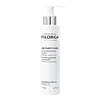What's inside
What's inside
 Key Ingredients
Key Ingredients

No key ingredients
 Benefits
Benefits

 Concerns
Concerns

 Ingredients Side-by-side
Ingredients Side-by-side

Water
Skin ConditioningGlycerin
HumectantDisodium Cocoyl Glutamate
CleansingGluconolactone
Skin ConditioningCocamidopropyl Betaine
CleansingNiacinamide
SmoothingSodium Citrate
BufferingXanthan Gum
EmulsifyingSodium Hydroxide
BufferingPropanediol
SolventSodium Chloride
MaskingSodium Cocoyl Alaninate
Zinc Gluconate
Skin ConditioningParfum
MaskingTrehalose
HumectantUrea
BufferingCaprylyl Glycol
EmollientCitric Acid
BufferingGlycolic Acid
BufferingAzelaic Acid
BufferingMandelic Acid
AntimicrobialSucrose Palmitate
EmollientSerine
MaskingPentylene Glycol
Skin ConditioningMaltodextrin
AbsorbentBixa Orellana Seed Extract
MaskingGlyceryl Linoleate
EmollientSodium Hyaluronate
HumectantPrunus Amygdalus Dulcis Oil
Skin ConditioningAlgin
MaskingDisodium Phosphate
BufferingGlyceryl Polyacrylate
Pullulan
Hydrolyzed Wheat Flour
Skin ConditioningGlucose
HumectantPhenoxyethanol
PreservativePotassium Phosphate
BufferingPotassium Chloride
CI 61570
Cosmetic ColorantPotassium Sorbate
PreservativeCalcium Chloride
Astringent1,2-Hexanediol
Skin ConditioningMagnesium Sulfate
Glutamine
Skin ConditioningDipeptide Diaminobutyroyl Benzylamide Diacetate
Skin ConditioningSodium Phosphate
BufferingCI 19140
Cosmetic ColorantAscorbic Acid
AntioxidantSodium Acetate
BufferingTocopherol
AntioxidantLysine Hcl
Skin ConditioningArginine Hcl
Skin ConditioningAlanine
MaskingHistidine Hcl
Skin ConditioningValine
MaskingLeucine
Skin ConditioningThreonine
Isoleucine
Skin ConditioningTryptophan
MaskingPhenylalanine
MaskingTyrosine
MaskingGlycine
BufferingPolysorbate 80
EmulsifyingCystine
MaskingCyanocobalamin
Skin ConditioningGlutathione
Asparagine
MaskingAspartic Acid
MaskingOrnithine Hcl
Skin ConditioningGlutamic Acid
HumectantNicotinamide Adenine Dinucleotide
Skin ConditioningProline
Skin ConditioningMethionine
Skin ConditioningTaurine
BufferingHydroxyproline
Skin ConditioningGlucosamine Hcl
Coenzyme A
Skin ConditioningSodium Glucuronate
HumectantThiamine Diphosphate
Skin ConditioningRetinyl Acetate
Skin ConditioningInositol
HumectantNiacin
SmoothingPyridoxine Hcl
Skin ConditioningBiotin
AntiseborrhoeicCalcium Pantothenate
Riboflavin
Cosmetic ColorantSodium Tocopheryl Phosphate
AntioxidantThiamine Hcl
MaskingFolic Acid
Skin ConditioningWater, Glycerin, Disodium Cocoyl Glutamate, Gluconolactone, Cocamidopropyl Betaine, Niacinamide, Sodium Citrate, Xanthan Gum, Sodium Hydroxide, Propanediol, Sodium Chloride, Sodium Cocoyl Alaninate, Zinc Gluconate, Parfum, Trehalose, Urea, Caprylyl Glycol, Citric Acid, Glycolic Acid, Azelaic Acid, Mandelic Acid, Sucrose Palmitate, Serine, Pentylene Glycol, Maltodextrin, Bixa Orellana Seed Extract, Glyceryl Linoleate, Sodium Hyaluronate, Prunus Amygdalus Dulcis Oil, Algin, Disodium Phosphate, Glyceryl Polyacrylate, Pullulan, Hydrolyzed Wheat Flour, Glucose, Phenoxyethanol, Potassium Phosphate, Potassium Chloride, CI 61570, Potassium Sorbate, Calcium Chloride, 1,2-Hexanediol, Magnesium Sulfate, Glutamine, Dipeptide Diaminobutyroyl Benzylamide Diacetate, Sodium Phosphate, CI 19140, Ascorbic Acid, Sodium Acetate, Tocopherol, Lysine Hcl, Arginine Hcl, Alanine, Histidine Hcl, Valine, Leucine, Threonine, Isoleucine, Tryptophan, Phenylalanine, Tyrosine, Glycine, Polysorbate 80, Cystine, Cyanocobalamin, Glutathione, Asparagine, Aspartic Acid, Ornithine Hcl, Glutamic Acid, Nicotinamide Adenine Dinucleotide, Proline, Methionine, Taurine, Hydroxyproline, Glucosamine Hcl, Coenzyme A, Sodium Glucuronate, Thiamine Diphosphate, Retinyl Acetate, Inositol, Niacin, Pyridoxine Hcl, Biotin, Calcium Pantothenate, Riboflavin, Sodium Tocopheryl Phosphate, Thiamine Hcl, Folic Acid
 Reviews
Reviews

Ingredients Explained
These ingredients are found in both products.
Ingredients higher up in an ingredient list are typically present in a larger amount.
Glycerin is already naturally found in your skin. It helps moisturize and protect your skin.
A study from 2016 found glycerin to be more effective as a humectant than AHAs and hyaluronic acid.
As a humectant, it helps the skin stay hydrated by pulling moisture to your skin. The low molecular weight of glycerin allows it to pull moisture into the deeper layers of your skin.
Hydrated skin improves your skin barrier; Your skin barrier helps protect against irritants and bacteria.
Glycerin has also been found to have antimicrobial and antiviral properties. Due to these properties, glycerin is often used in wound and burn treatments.
In cosmetics, glycerin is usually derived from plants such as soybean or palm. However, it can also be sourced from animals, such as tallow or animal fat.
This ingredient is organic, colorless, odorless, and non-toxic.
Glycerin is the name for this ingredient in American English. British English uses Glycerol/Glycerine.
Learn more about GlycerinPhenoxyethanol is a preservative that has germicide, antimicrobial, and aromatic properties. Studies show that phenoxyethanol can prevent microbial growth. By itself, it has a scent that is similar to that of a rose.
It's often used in formulations along with Caprylyl Glycol to preserve the shelf life of products.
Water. It's the most common cosmetic ingredient of all. You'll usually see it at the top of ingredient lists, meaning that it makes up the largest part of the product.
So why is it so popular? Water most often acts as a solvent - this means that it helps dissolve other ingredients into the formulation.
You'll also recognize water as that liquid we all need to stay alive. If you see this, drink a glass of water. Stay hydrated!
Learn more about Water